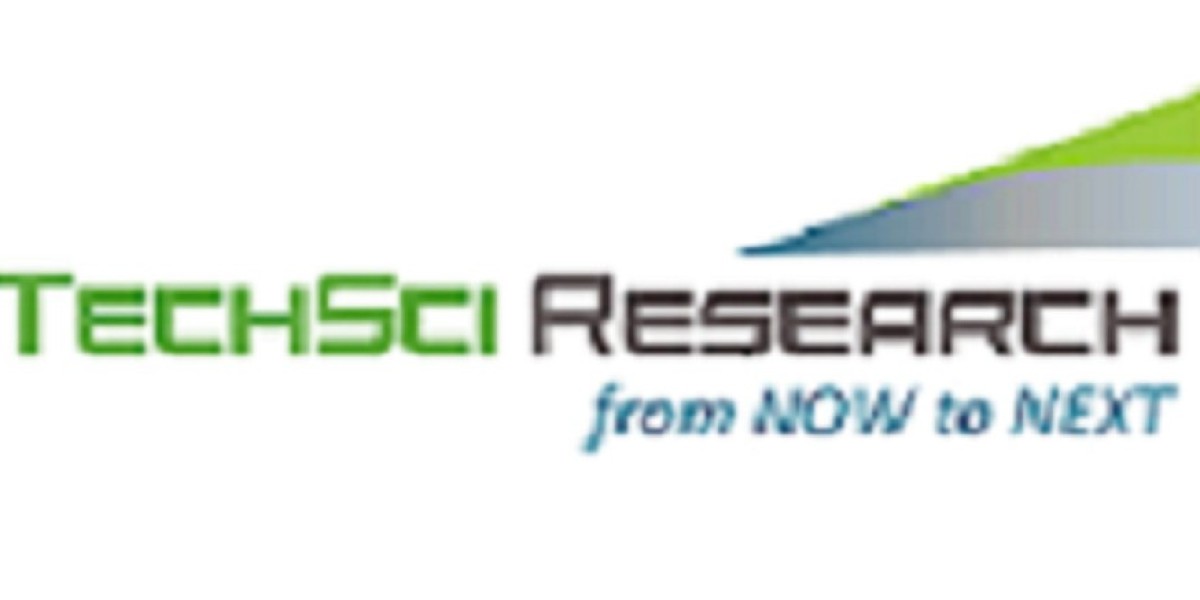Industry Overview
According to TechSci Research’s report titled “United States Baby Safety Products Market – By Region, Competition Forecast & Opportunities, 2020–2030F”, the United States Baby Safety Products Market was valued at USD 23.73 billion in 2024 and is projected to reach USD 34.65 billion by 2030, growing at a CAGR of 6.57% during the forecast period.
This steady market expansion is being driven by a convergence of multiple socio-economic and technological factors including rising parental awareness, stringent safety regulations, the increasing integration of smart technologies, and the rapid penetration of e-commerce platforms. Parents in the United States today are more informed and proactive in ensuring the well-being of their infants and toddlers, prompting a surge in demand for reliable and innovative baby safety products.
Industry Key Highlights
Market Size in 2024: USD 23.73 Billion
Forecast by 2030: USD 34.65 Billion
CAGR (2025–2030): 6.57%
Fastest-Growing Region: Western United States
Fastest-Growing Channel: Online Retail
Key Trends: Smart baby tech, eco-conscious products, aesthetic product integration
Market Dynamics
Key Growth Drivers
1. Growing Parental Awareness and Proactive Parenting
Modern parenting trends have shifted from reactive to proactive approaches. Parents now seek to anticipate and prevent safety risks—whether at home or during travel. With increasing knowledge of household hazards like choking, sharp corners, electrical outlets, and unattended movement, parents are investing more in baby safety products such as:
Cabinet locks and corner guards
Safety gates and window guards
Baby monitors with motion detection
Car seats and smart strollers
Childproofing tools for electrical outlets and furniture
This surge in safety consciousness has elevated these products from optional to essential in American households.
2. Technological Advancements in Baby Safety
Smart technology is revolutionizing the baby care space. Today’s parents expect seamless integration of baby safety products with mobile devices and home automation systems. High-growth innovations include:
Smart baby monitors with HD cameras, cry alerts, and two-way audio
Wearable baby monitors that track breathing, heart rate, and temperature
Automated safety gates connected to motion sensors
IoT-enabled car seats for real-time alerts
The entry of tech companies into the baby safety space has further expanded consumer options, particularly appealing to millennial and Gen Z parents comfortable with digital ecosystems.
3. Regulatory Oversight and Certification Standards
The U.S. Consumer Product Safety Commission (CPSC) and related regulatory bodies have implemented rigorous standards for baby safety products. These include:
Material safety (non-toxic, BPA-free)
Structural integrity and stability
Anti-choking design mechanisms
Age-appropriate labeling and instructions
These regulations have established trust in certified products and incentivized brands to consistently innovate while maintaining compliance. Public health campaigns and hospital initiatives have further promoted certified safety gear, boosting consumer confidence and adoption.
4. E-commerce and Online Retail Penetration
The digital revolution in retail has significantly impacted the baby product segment. Online platforms such as Amazon, Walmart, BuyBuy Baby, and niche websites like Babylist or The Tot offer extensive catalogs with:
Detailed product reviews and user feedback
Smart comparison tools
Safety certification visibility
Subscription-based delivery models
Seamless mobile app experiences
The COVID-19 pandemic amplified e-commerce adoption, pushing even reluctant consumers online. Today, online retail is the fastest-growing distribution channel, especially among tech-savvy and time-constrained parents.
Challenges Impacting Market Growth
1. Affordability and Counterfeit Risks
High-quality baby safety products often come at a premium price, creating a barrier for middle- and lower-income households. Additionally, the online space has seen a surge in counterfeit or uncertified products that may compromise safety. Regulatory agencies and e-commerce platforms continue to combat this, but challenges persist.
2. Product Complexity and Learning Curve
Smart baby products can sometimes overwhelm first-time parents with their setup complexity or perceived overengineering. Brands must invest in user-friendly interfaces, intuitive installation guides, and responsive customer support to address adoption barriers.
3. Environmental and Disposal Concerns
As safety products are replaced due to wear, growth, or new child arrivals, there’s growing concern about plastic waste and product disposal. While some companies are embracing circular economy models or sustainable materials, broader industry initiatives are still in development.
Emerging Trends
1. Eco-Friendly Baby Safety Solutions
With environmental consciousness on the rise, especially among millennial parents, the demand for non-toxic, sustainable, and biodegradable materials is growing. Popular developments include:
Bamboo-based high chairs and gates
Recyclable outlet covers and corner guards
Organic, toxin-free cushions in baby car seats
Minimalist, Scandinavian-inspired design aesthetics
Brands that marry sustainability with style and function are winning customer loyalty.
2. Integration of Aesthetics and Home Design
Today’s parents seek safety products that complement their interior decor. Brands are responding with:
Neutral and modern color palettes
Modular furniture-safety hybrids
Sleek and slim-line baby gates
Wireless and hidden baby monitors
This shift reflects a growing desire to maintain a cohesive lifestyle and home aesthetic while ensuring safety.
3. Subscription and Rental Models
To ease the financial burden of frequent upgrades as children grow, companies are exploring:
Subscription plans for monitors and car seats
Rental services for cribs and safety gear
Modular systems that adapt with the child’s development
These models also reduce waste and promote accessibility among a broader consumer base.
Segmentation Analysis
By Product Type
Car Seats: Mandatory for travel; driven by evolving safety standards and tech integration (e.g., sensors for car temperature and buckle status)
Strollers: Increasing demand for hybrid stroller systems with safety harnesses, UV protection, and anti-tip designs
Monitors: Fastest-growing segment due to real-time video and health monitoring integration
Others: Safety gates, edge guards, socket covers, cabinet locks, and childproofing accessories
By Distribution Channel
Online Retail (Fastest-Growing Channel)
Convenience, better information, customer reviews, and wider assortment
Growth of mobile-first parenting apps and online baby registries
Subscription box models like Lovevery and Hello Bello drive recurring purchases
Offline Retail
Still vital for high-touch experiences—especially for car seats and strollers
Presence in large-format stores like Target, Walmart, and BuyBuy Baby
Often used for trial/inspection before online purchase
By Region
Western United States (Fastest-Growing Region)
High-income tech-savvy population in California, Washington, Oregon
Preference for eco-friendly, design-centric safety products
Strong infrastructure for e-commerce fulfillment and logistics
Awareness driven by hospital-led infant safety initiatives and parenting workshops
Competitive Landscape
The U.S. baby safety products market features a mix of multinational corporations and innovative startups. The industry is competitive, with players differentiating through technology, sustainability, price, and brand trust.
Key Players and Strategic Focus
| Company | Key Strategies |
|---|---|
| Dorel Industries Inc. | Strong multi-brand portfolio; focus on smart car seats & strollers |
| Newell Brands Inc. (Graco, Safety 1st) | Budget-friendly, certified, and mass market accessibility |
| Dex Products Inc. | Specializes in baby proofing and in-home safety |
| Goodbaby International Holdings Ltd. | Premium quality and international expansion |
| Evenflo | Affordable, durable car seats and feeding solutions |
| Dreambaby | Home safety focus; distribution through pharmacy and home retail chains |
| KidKusion Inc. | Edge and corner protection; innovative use of foam and rubber |
| Babo Care | Wearables and monitoring solutions, often distributed online |
| Jané Group | European influence; modern strollers and travel gear |
Many companies are now investing in AI-powered R&D, brand collaborations, and D2C distribution models to expand their footprint.
Future Outlook (2025–2030)
Short-Term Outlook (2025–2027)
Expansion of multi-functional safety products (e.g., smart cribs with safety alerts)
Growth in tier-2 city penetration via e-commerce
Heightened certification demand post any high-profile recalls
Mid-to-Long-Term Outlook (2028–2030)
Wider adoption of biometric wearable baby safety devices
AI-based parenting assistants with voice integration for safety alerts
Expansion of circular economy models—buyback, refurbishment, and recycling
Global safety benchmark alignment to address import/export compliance
10 Benefits of This Research Report
Provides accurate market sizing and projections to 2030
Offers in-depth analysis by product, region, and sales channel
Highlights key consumer trends, such as eco-consciousness and tech integration
Identifies regulatory landscape and impact on safety certifications
Explores competitive strategies of top market players
Pinpoints growth opportunities in emerging product segments
Covers e-commerce disruption and online buying behaviors
Assesses post-COVID shifts in retail and parenting norms
Offers strategic recommendations for entry, innovation, and expansion
Equips stakeholders with actionable insights for investment decisions
Conclusion
The United States Baby Safety Products Market is undergoing dynamic transformation. Driven by a highly aware and digitally native consumer base, this sector is rapidly embracing smart technologies, sustainable materials, and multi-functional designs.
As the demand for quality, convenience, and safety continues to rise, companies must align with emerging consumer values while complying with ever-stringent safety regulations. E-commerce, eco-innovation, and tech-enabled parenting solutions will be the pillars of future success.
Contact Us-
TechSci Research LLC
420 Lexington Avenue, Suite 300,
New York, United States- 10170
M: +13322586602
Website: www.techsciresearch.com






